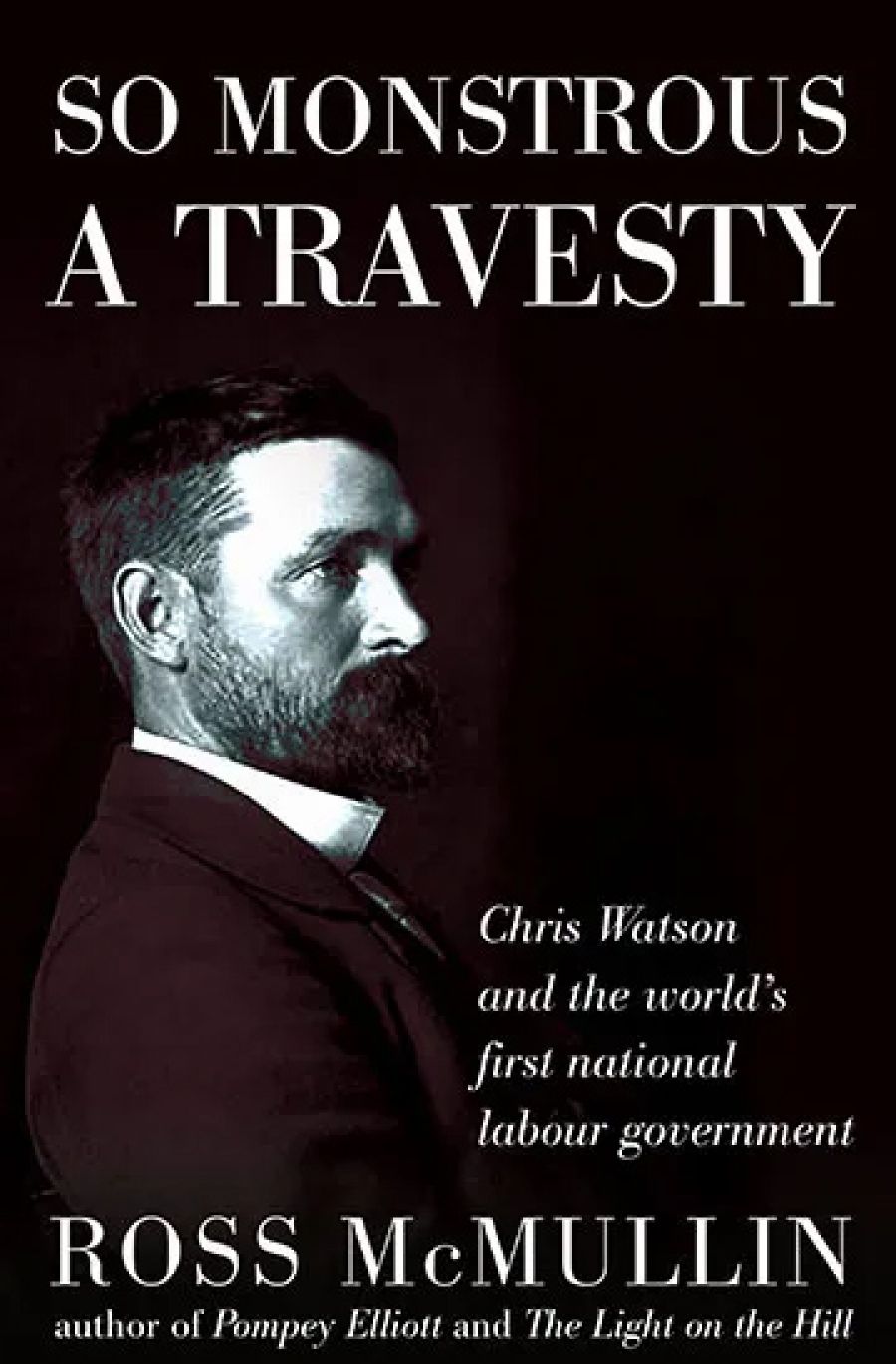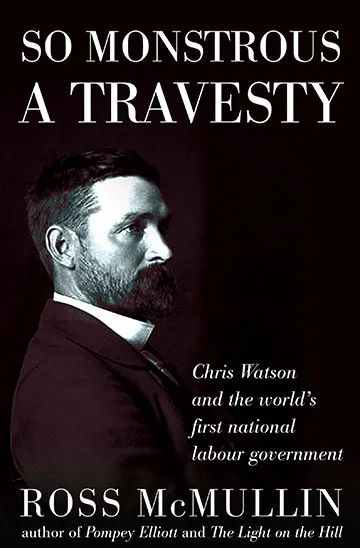
- Free Article: No
- Contents Category: Reviews
- Review Article: Yes
- Online Only: No
- Custom Highlight Text:
The true believers, proud of their history and with hope for the future, assembled in Melbourne on 27 April 2004 to celebrate the first time the Labor Party formed a federal ministry a century before – and, of course, to attend the launch of the obligatory book commemorating the event, So Monstrous a Travesty.
- Book 1 Title: So Monstrous a Travesty
- Book 1 Subtitle: Chris Watson and the world's first national labour government
- Book 1 Biblio: Scribe, $29.95pb, 200pp
- Book 1 Cover Small (400 x 600):

- Book 1 Cover (800 x 1200):

That’s the story, and the folks were all there in Melbourne to celebrate it: a beaming Bob Hawke, with his biographer and wife Blanche D’Alpuget; a sombre Paul Keating, wearing that haunted post-prime ministerial look of his; John Faulkner, learned student of the party’s history, fierce guardian of its traditions. Most importantly, Mark Latham was there. Although a little longer in the tooth than 37-year-old Prime Minister Watson, he is nevertheless youthful and primed for office. He posed for the cameras with Hawke, Labor’s most electorally successful leader by a long stretch. The message was clear: Labor still has the right and ability to govern. The baton is passed on. Chifley’s light on the hill burns brightly.
We’ve been here before. On 8 May 2001 Labor celebrated the centenary of the Federal Parliamentary Labor Party with a slap-up dinner in Melbourne. The gang was all there on that occasion, too, and, yes, a book was launched to celebrate the federal centenary of the party. Labor, riding high in the polls, had recently won a normally blue-ribbon Liberal seat in a by-election, and it seemed headed for victory in the looming general election. Writing in The Australian the following day, Matt Price detected at the gathering ‘a smug sense of impending triumph’.
Labor’s parade was then not so much rained on as utterly swept away by a tsunami. Within months, the Howard government initiated an imaginative, if not quite impromptu, celebration of the centenary of the Immigration Restriction Act of 1901 in the seas off the northern Australian coast. Labor’s worthy effort back in May seemed pale by comparison.
Ross McMullin, the author of So Monstrous a Travesty – the title is derived from hostile press reaction to the Watson government – was an important contributor to the Labor Party’s first centenary celebrations back in 1991, which commemorated the emergence of the party in the Australian colonies a century earlier. He produced The Light on the Hill: The Australian Labor Party 1891-1991, a massive book that combined a strong narrative with evocative biographical treatment of Labor’s political movers and shakers over a century. McMullin is no party hack writer. Far from it. He could not produce a third-rate ‘quickie’ to cash in on an anniversary if his life depended on it. For one thing, he’s a meticulous researcher. I strongly suspect that McMullin is the first historian to check the response of the Tungamah and Lake Rowan Express to the formation of the Watson government. He also has an eye for the little details that graphically illuminate personality and place. We learn that Senator Gregor McGregor was the only Labor minister who didn’t read the oath of allegiance at the swearing-in ceremony of the new ministry: being almost blind, he had memorised it, and then surprised onlookers by reciting it with perfect accuracy. It’s a simple story, but how easily it could have been missed by an historian less able than McMullin, and how much it says about McGregor’s sense of dignity, which, for this reader, briefly overwhelmed the wonder at a government minister having eyesight so poor that he ‘had to have documents read to him’.
This book is beautifully crafted. McMullin does more than simply tell the story of the Watson government, although he does that well. With carefully placed chapters admirable for both their economy and readability, McMullin narrates the emergence of the Labor Party in Australia in the late nineteenth century, and compares it with parties of the left elsewhere in the world. Australian Labor, he reminds us, was on the agenda in contemporary European debates about the future of socialism. It provided an example to be emulated, or shunned, depending on whether you were a revolutionary or a moderate.
When Watson sought to form a ministry in 1904, he had difficulty finding an attorney-general: Labor simply didn’t have anyone with sufficient legal expertise, Billy Hughes having only recently qualified for the law. The party was dominated by working men. Watson turned to a non-Labor radical, H.B. Higgins, who agreed to serve. ‘The poor fellows need encouragement,’ Higgins explained to Alfred Deakin.
By way of contrast, if Mark Latham has to form a federal Labor ministry later this year, he’ll have no difficulty finding a suitably qualified lawyer to serve as attorney-general in a parliamentary party dominated by the tertiary -educated professional class. That might be a mark of Australian political and social progress in the century since the Watson government made its brief appearance on the political scene.
Or it might not.


Comments powered by CComment